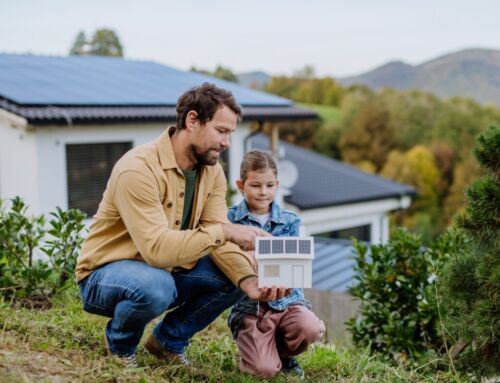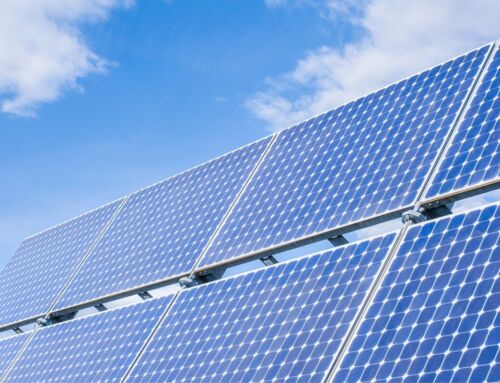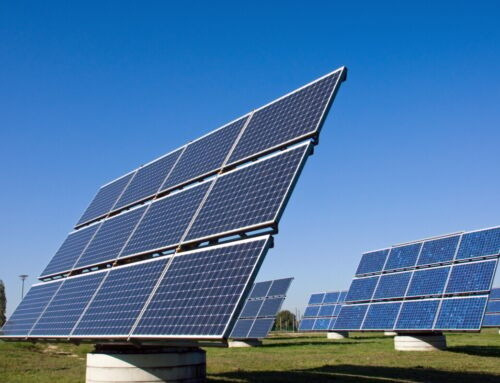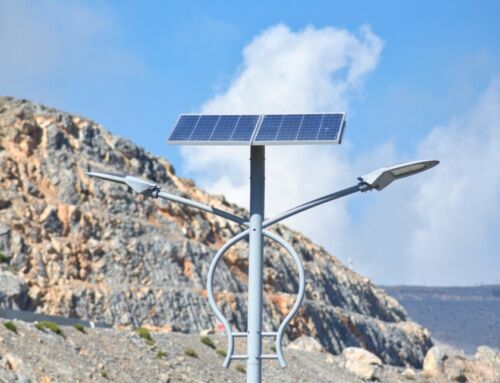What Are Solar Installation Parts?
Are you considering harnessing the power of the sun to reduce your energy bills and carbon footprint? Understanding the basics of solar installation parts is crucial to making informed decisions. The problem many face is navigating the myriad components involved in setting up a solar panel system. But fear not, as we promise to break down the essentials, making the process less daunting and more accessible.
Key Components of Solar Panel Installation
- Solar Panels: These are the heart of your system, capturing sunlight and converting it into electricity.
- Inverter: This device converts the direct current (DC) produced by the panels into alternating current (AC) used by most home appliances.
- Mounting System: Ensures your panels are securely attached to your roof or ground setup.
- Battery Storage: Optional but beneficial for storing excess energy for use during cloudy days or at night.
- Monitoring System: Allows you to track your energy production and consumption, optimizing efficiency. By understanding these components, you can better appreciate what solar installation parts are and how they contribute to a sustainable energy solution.
The Role of Solar Panels: Capturing the Sun’s Energy
Harnessing the power of the sun is an exciting venture, but understanding the key parts needed for solar panel installation is crucial for success. Many homeowners are eager to embrace solar energy but often find themselves puzzled by the question: What are solar installation parts? Fortunately, with the right components, you can efficiently capture and convert sunlight into usable electricity, paving the way for a sustainable future.
Essential Components of Solar Panel Systems
To effectively capture the sun’s energy, a solar panel system requires several essential components:
- Solar Panels: These are the heart of the system, converting sunlight into electricity through photovoltaic cells.
- Inverter: This device transforms the direct current (DC) produced by the panels into alternating current (AC), which powers your home.
- Mounting System: Ensures panels are securely attached to your roof or ground, optimizing exposure to sunlight.
Additional Parts for Enhanced Efficiency
Beyond the basics, additional parts can enhance the efficiency and reliability of your solar installation. Battery Storage allows you to store excess energy for use during cloudy days or at night, while Monitoring Systems help track energy production and consumption, ensuring your system operates at peak performance. By understanding these components, you can make informed decisions and maximize your solar investment.
Inverters Explained: Converting Solar Power into Usable Electricity
When considering the key parts needed for solar panel installation, inverters play a pivotal role. Imagine capturing the sun’s energy but not being able to use it efficiently—this is where inverters come in. They convert the direct current (DC) produced by solar panels into alternating current (AC), which powers our homes and businesses. Without inverters, the energy harnessed from the sun would remain untapped potential. By understanding the importance of inverters, you can ensure your solar installation is both effective and efficient.
Types of Inverters
- String Inverters: Ideal for installations with consistent sunlight exposure, these are cost-effective and reliable.
- Microinverters: Perfect for roofs with shading issues, they optimize each panel individually.
- Power Optimizers: Combine the benefits of string inverters and microinverters, enhancing performance while maintaining cost efficiency. Inverters are essential in the list of what are solar installation parts, as they ensure the energy produced is usable. Choosing the right type can significantly impact the efficiency and cost-effectiveness of your solar power system.
Mounting Systems: Securing Your Solar Panels for Maximum Efficiency
When considering solar energy, one might wonder, “What are solar installation parts?” A crucial component often overlooked is the mounting system. This system is the backbone of any solar panel installation, ensuring your panels are securely attached and optimally positioned to capture the sun’s rays. Without a robust mounting system, even the most efficient solar panels can underperform. The promise of a well-installed system is maximum energy efficiency and longevity, safeguarding your investment for years to come.

Ready to take the next step? Discover how solar energy can elevate your home and reduce those energy bills. Request a Free Solar Estimate at NEW SOLAR QUOTE
Key Components of Mounting Systems
- Roof Mounts: These are essential for residential installations, designed to attach panels directly to your roof. They come in various types, such as flush mounts and tilt mounts, to accommodate different roof styles and angles.
- Ground Mounts: Ideal for properties with ample land, these systems allow for easy maintenance and optimal panel positioning.
- Tracking Systems: These advanced mounts adjust the panel’s angle throughout the day, maximizing exposure to sunlight and boosting energy output. By understanding these components, you can ensure your solar panels are installed for peak performance.
Batteries and Storage: How to Save Solar Energy for Later Use
Harnessing the power of the sun is an exciting venture, but what happens when the sun sets? This is where batteries and storage systems come into play, offering a solution to the problem of energy availability. By understanding what are solar installation parts, you can ensure your solar setup is efficient and reliable. Let’s explore how batteries and storage systems are key components in solar panel installations, ensuring you have energy when you need it most.
Understanding Solar Batteries
Solar batteries are essential for storing the energy your panels collect during the day. They allow you to use solar power even when the sun isn’t shining. These batteries come in various types, such as lithium-ion and lead-acid, each with its own benefits. Lithium-ion batteries, for instance, are known for their longer lifespan and higher efficiency. By integrating the right battery type into your solar installation, you can maximize energy savings and reduce reliance on the grid.
Benefits of Energy Storage
Systems Energy storage systems not only provide backup power but also enhance the overall efficiency of your solar setup.
They help in balancing energy loads, reducing electricity bills, and increasing energy independence. With the right storage system, you can store excess energy generated during peak sunlight hours and use it during high-demand periods. This flexibility ensures that your home or business remains powered, even during outages or cloudy days, making solar energy a more viable and sustainable option.
Wiring and Connectors: The Backbone of Solar Panel Systems
When considering solar panel installation, understanding the essential components is crucial. Wiring and connectors might not be the first things that come to mind, but they are indeed the backbone of any solar panel system. Without them, the energy harnessed from the sun cannot be efficiently transferred and utilized. This section will explore what are solar installation parts and how wiring and connectors play a pivotal role in ensuring your solar setup operates smoothly and safely.
Key Components of Solar Wiring and Connectors
- Wiring Types: Solar installations typically use specific types of wiring, such as PV wire and USE-2 wire, designed to withstand outdoor conditions and high temperatures.
- Connectors: MC4 connectors are standard in solar installations, providing a secure and weatherproof connection between panels and other components.
- Inverters: These convert the direct current (DC) generated by solar panels into alternating current (AC) for home use, requiring precise wiring connections. By ensuring these components are correctly installed, you can maximize the efficiency and longevity of your solar panel system, making the most of your investment in renewable energy.
Monitoring Systems: Keeping Track of Your Solar Power Production
When it comes to solar panel installation, understanding the key parts needed is crucial for maximizing efficiency and performance. One often overlooked component is the monitoring system, a vital tool for keeping track of your solar power production. Without it, you might miss out on optimizing your energy usage and savings. By integrating a robust monitoring system, you can ensure that your solar panels are operating at their peak, providing you with the insights needed to make informed decisions about your energy consumption.
Why Monitoring Systems Matter
- Real-time Data: Monitoring systems provide real-time data on energy production, helping you understand how much power your panels are generating at any given moment.
- Performance Alerts: They alert you to any performance issues, allowing for quick troubleshooting and maintenance.
- Energy Optimization: By analyzing the data, you can adjust your energy usage patterns to maximize efficiency and reduce costs. Incorporating a monitoring system into your solar setup not only enhances your understanding of what are solar installation parts but also empowers you to take control of your energy future.
Safety Equipment: Ensuring a Secure Solar Installation
When considering what are solar installation parts, safety equipment is often overlooked but is crucial for a successful and secure setup. The problem many face is understanding which safety components are necessary to protect both the installers and the system itself. This section promises to clarify the essential safety equipment needed to ensure a smooth and secure solar panel installation process.
Personal Protective Equipment (PPE)
Installers must prioritize their safety by wearing appropriate personal protective equipment (PPE).
This includes hard hats, safety glasses, gloves, and non-slip footwear. These items protect against potential hazards such as falling objects, electrical shocks, and slips, ensuring that the installation process is not only efficient but also safe.
System Safety Components
Beyond personal safety, the solar system itself requires specific safety components. These include grounding equipment, surge protectors, and disconnect switches.
Grounding equipment prevents electrical faults, while surge protectors shield the system from voltage spikes. Disconnect switches allow for safe maintenance and emergency shutdowns, ensuring the longevity and safety of the solar installation.
How NewSolarQuote Can Help You Find the Right Solar Installation Parts
Are you ready to harness the power of the sun but unsure about what are solar installation parts? You’re not alone. Many homeowners and businesses are eager to go green but find themselves overwhelmed by the technicalities of solar panel installation. At NewSolarQuote, we simplify this process by connecting you with the essential components needed for a successful solar setup, ensuring you have everything from solar panels to mounting systems.
Essential Solar Installation Parts
To start, understanding the key parts needed for solar panel installation is crucial.
These include:
- Solar Panels: The heart of your system, converting sunlight into electricity.
- Inverters: Transform the direct current (DC) from the panels into alternating current (AC) for home use.
- Mounting Systems: Secure your panels safely on rooftops or ground setups.
- Batteries: Store excess energy for use when the sun isn’t shining.
- Cabling and Connectors: Ensure efficient energy transfer between components.
Why Choose NewSolarQuote?
Navigating the world of solar installation can be daunting, but NewSolarQuote is here to guide you every step of the way. We provide expert advice and a comprehensive selection of high-quality parts tailored to your specific needs. Whether you’re a DIY enthusiast or working with a professional installer, our platform offers the resources and support to make your solar journey seamless and successful.
Future-Proofing Your Solar Setup: Planning for Expansion and Upgrades
Are you considering solar energy for your home or business? Understanding what are solar installation parts is crucial for a successful setup. The problem many face is not planning for future expansion, which can limit your system’s efficiency and cost-effectiveness. By choosing the right components now, you can ensure your solar setup is ready for future upgrades, saving you time and money in the long run.
Essential Components for a Scalable Solar System
- Solar Panels: The heart of your system, choose panels with high efficiency and durability. Consider models that allow easy integration with additional panels.
- Inverters: Opt for inverters that can handle increased capacity, ensuring they can convert additional solar energy efficiently.
- Mounting Systems: Select flexible mounting solutions that can accommodate more panels without requiring a complete overhaul.
Planning for Technological Advancements
As technology evolves, so do solar solutions. Investing in smart inverters and energy management systems can future-proof your setup. These components not only enhance current performance but also allow seamless integration with emerging technologies, such as battery storage and smart home systems, ensuring your solar investment remains valuable and efficient.
Take action today! Save money and protect the planet by going solar. Schedule your no-cost consultation now. Book Your Free Consultation at NEW SOLAR QUOTE
Want to see all your options? Head to FREE SOLAR QUOTES for a closer look at our solar offers.





